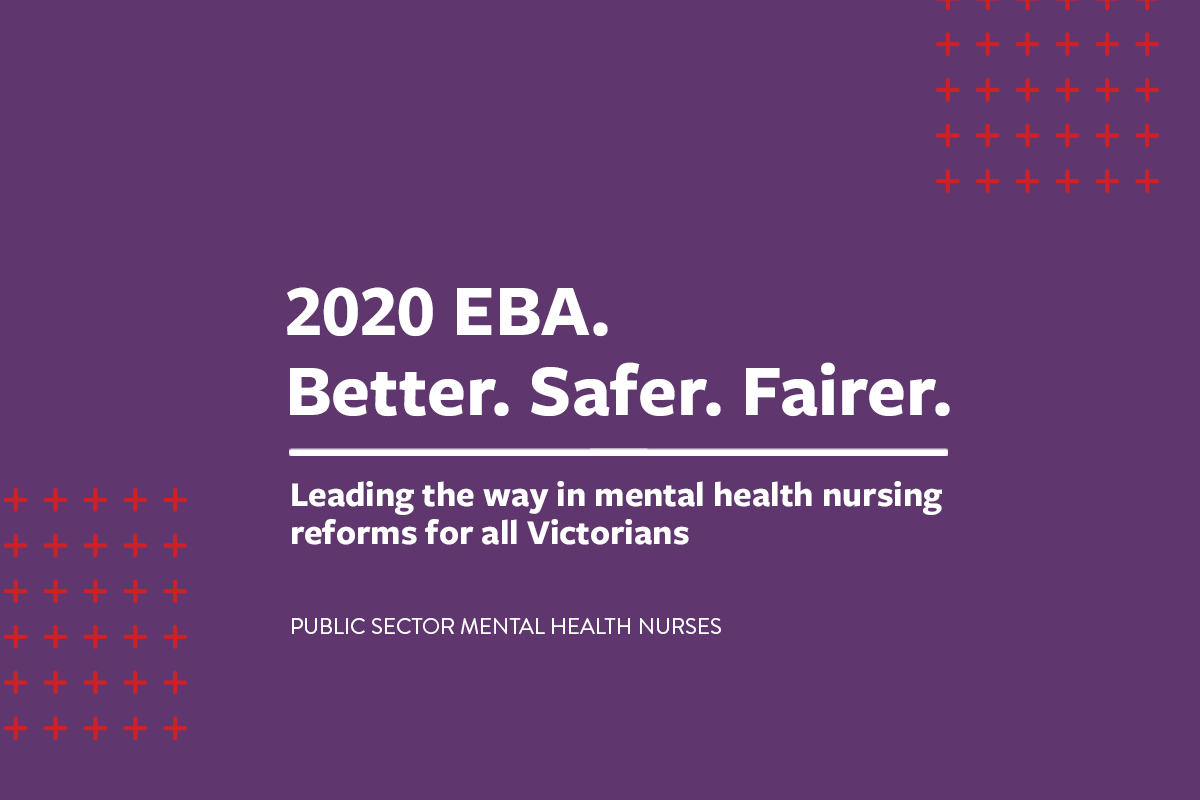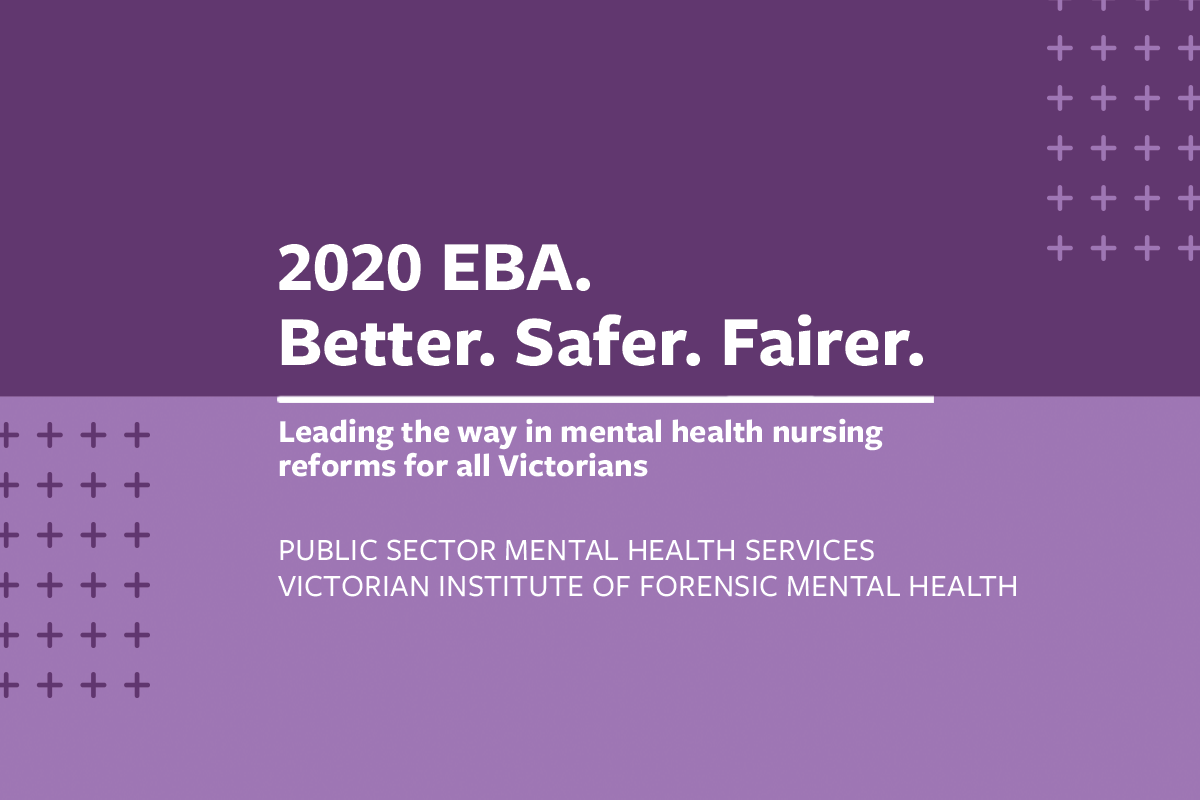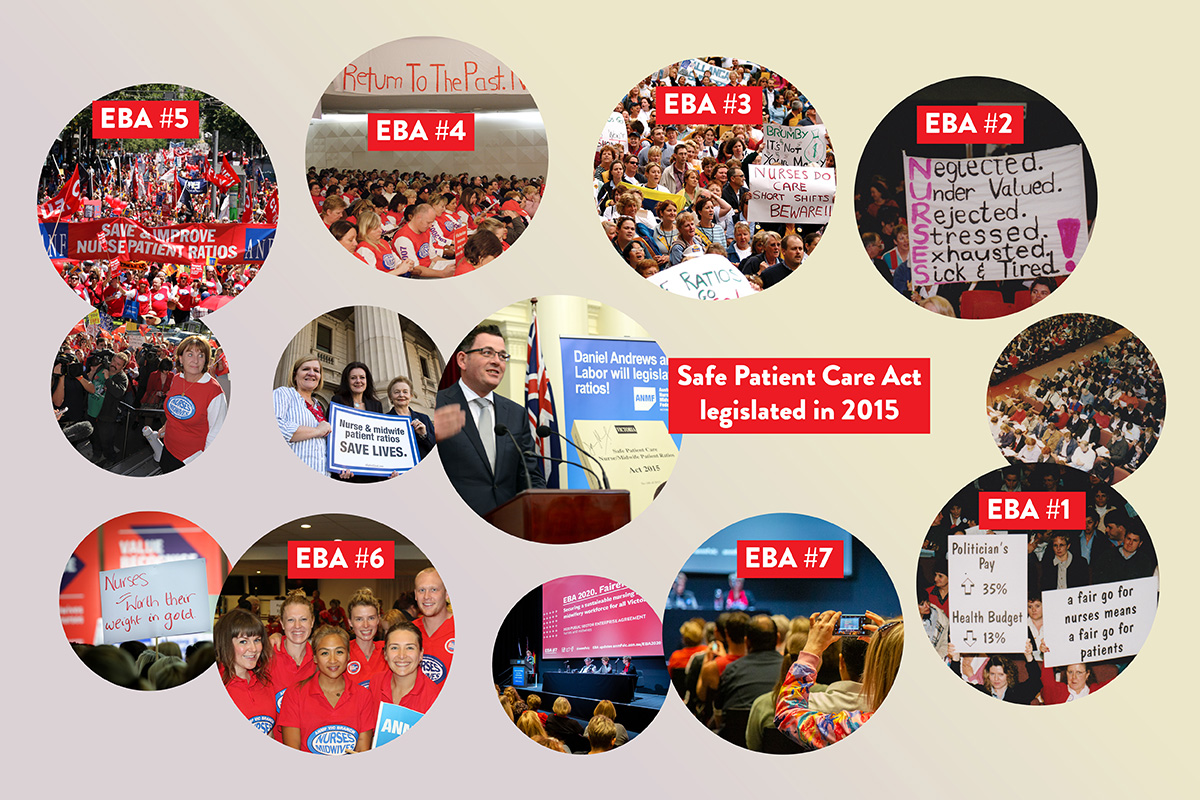
Paul Gilbert, ANMF (Vic Branch) Assistant Secretary
If you are a mental health nurse working in a Victorian private hospital, your wages and conditions are covered by the same enterprise agreement as the other nurses and midwives at your workplace.
This is not the case for mental health nurses working for a Victorian public health service.
Victoria is the only state or territory that has separate EBAs for nurses in public health services and public mental health services.
Another difference is the agreement that covers Victorian public sector mental health nurses also covers all other employees in these services – including allied health, laundry staff, and admin.
The public sector nurses and midwives agreement only covers nurses and midwives.
So why isn’t there one agreement covering all nurses, regardless of clinical speciality, and midwives?
The reasons are predominantly historical and shaped by the fact that nurses working in the psychiatric residential institutions were once public service employees and nurses in all other services were not.
We need to go back nearly 50 years before the policy of mainstreaming patients with mental illness in the late 1980s and early 1990s which led to the closure of Victoria’s ‘asylums’.
Registered psychiatric nurses and psychiatric enrolled nurses working in these government-run institutions were employed directly by the state of Victoria under the Public Service Act 1974. The same applied to other classifications working in these services. The Public Service Board decided their terms and conditions.
At the same time, nurses working in public hospitals and health services, outside of mental health services, were employed under Victorian Industrial Relations Commission Awards. (Victoria moved to the national workplace relations system in 1996 when the Kennett government abolished the VIRC.)
It got even more complicated. Registered nurses were employed under the Registered Nurses Award. The Hospital and Benevolent Homes Award outlined the wages and conditions for enrolled nurses.
By the early 1990s the Victorian Government had started replacing the asylums with smaller ‘Area Mental Health Services’. This included setting up additional acute wards and outpatient clinics within public hospitals.
While located within general hospitals they were organisationally and operationally distinct.
Employees of these new services were employed by the state and were part of the public service.
In 1992, the Australian Industrial Relations Commission (now the Fair Work Commission) issued a decision leading to registered and enrolled nurses in public sector hospitals coming under the one federal award. It contained comprehensive classifications and grades for nurses in public and private health services.
The decision did not include psychiatric nurses employed in the Victorian public service under the Public Service Act 1974. A then ANF (now ANMF) and Health Services Union 1992 demarcation agreement led to a new federal award applying to these nurses.
The Public Service Board was abolished in 1994 and then came a string of industrial documents covering the psychiatric nurses and other employees such as trade, technician, catering laundry and linen.
That’s why when enterprise bargaining began in 1997 it was a natural conclusion that the first certified agreements regulated the conditions and pay of all employees providing public sector mental health services, such as ward clerks and orderlies, not just the nurses.
And like the previous awards the first public sector nurses agreement, excluded nurses working in mental health services.
This separation continued in the 2000, 2004, 2007, 2012 and 2016 agreements and the 2020 EBA where negotiations are continuing.


